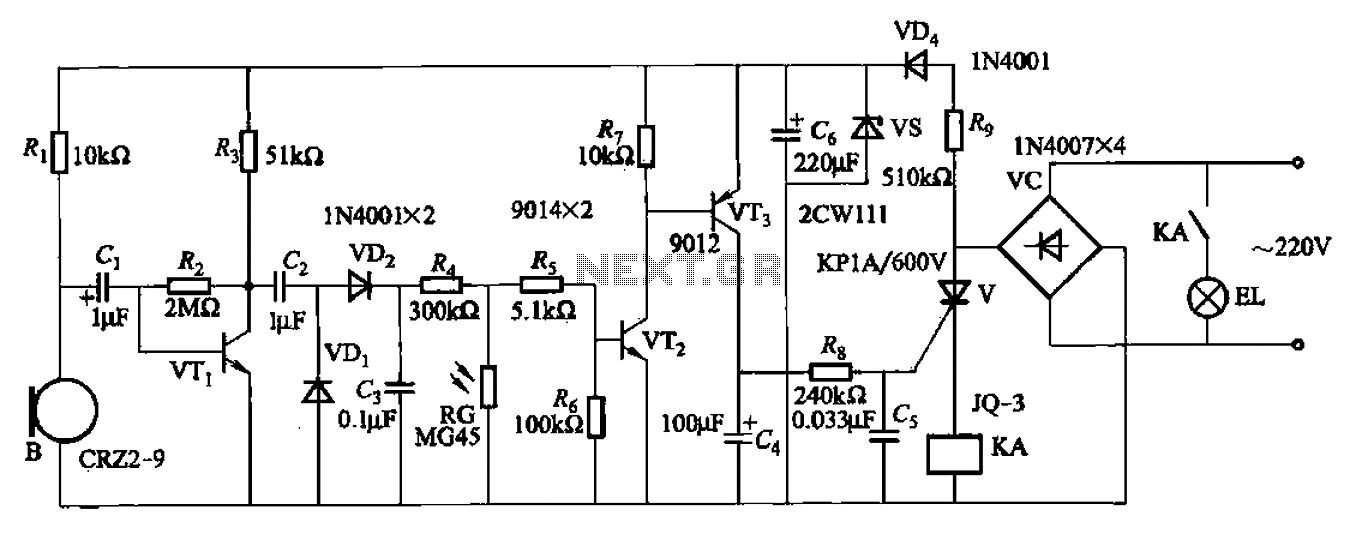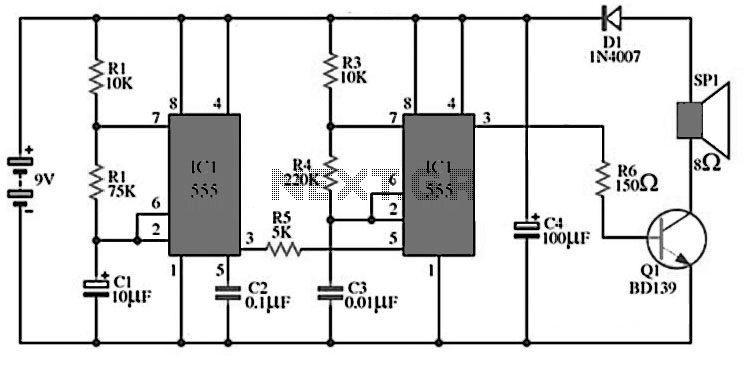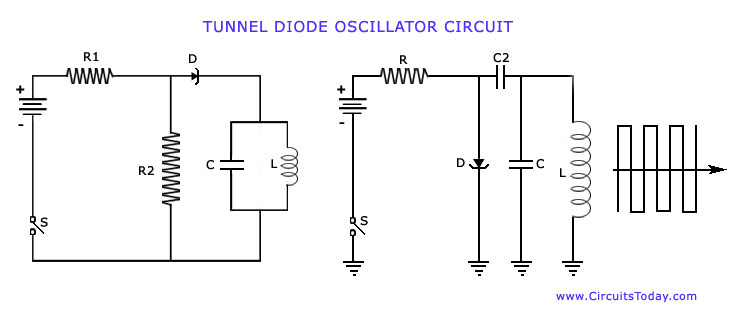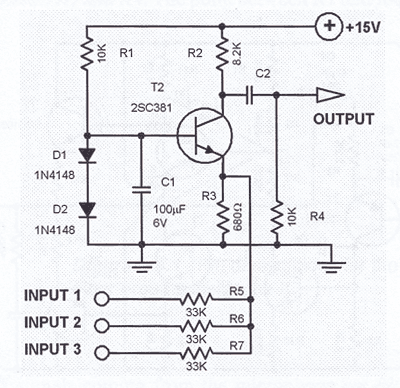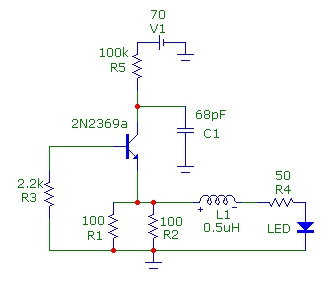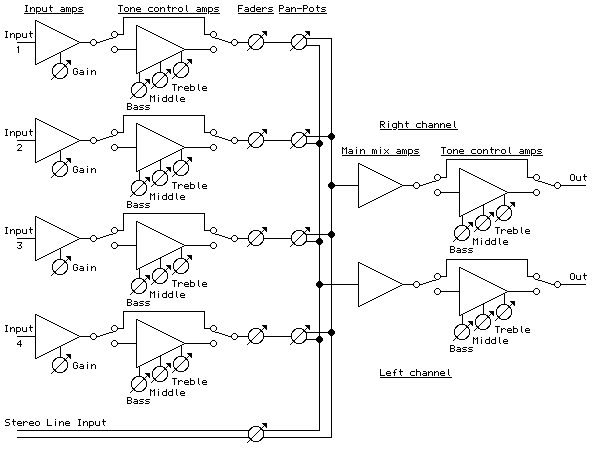
mixer circuits

The only drawback of a single operational amplifier (op-amp) stage is that it inverts the signal, necessitating an additional inverting buffer to restore the original phase if absolute phase is a concern. Various schematics exist for both configurations, but the optimal design remains uncertain, particularly regarding whether to position the volume potentiometer before or after the op-amp. Some schematics feature the volume potentiometer within the feedback loop of the op-amp; however, concerns have been raised that this configuration may introduce additional noise. Theoretically, placing the volume control after the op-amp is preferable, as it attenuates all noise, hum, and hash as the volume is decreased. While including the volume control in the feedback loop is a valid technique that can lead to a high-quality active volume control, it must be implemented correctly to achieve the best results. The choice of op-amp is critical, as is ensuring that no DC current flows through the wiper of the potentiometer. Doug Self employed this approach in his precision preamp, utilizing two op-amps per channel, which stands as a notable example.
The operational amplifier (op-amp) is a fundamental building block in analog signal processing. In audio applications, its configuration can significantly impact the performance of the circuit. When utilizing a single op-amp stage, the inherent behavior of the op-amp is to invert the input signal. This inversion necessitates the inclusion of an inverting buffer stage if maintaining the original phase of the signal is critical for the application.
The placement of the volume potentiometer (pot) in relation to the op-amp is a topic of debate among engineers. Positioning the volume control before the op-amp can lead to a reduction in the overall signal level entering the op-amp, which may inadvertently reduce the signal-to-noise ratio (SNR) if the op-amp is not operating under optimal conditions. Conversely, placing the volume pot after the op-amp allows for the attenuation of the output signal, effectively reducing the amplitude of any noise or hum present in the signal path. This configuration is often preferred in high-fidelity audio applications where noise reduction is paramount.
In some designs, the volume potentiometer is incorporated into the feedback loop of the op-amp. This method can yield a high-quality active volume control, as it allows for dynamic adjustment of gain while maintaining linearity. However, this approach requires careful design considerations to avoid introducing additional noise and distortion. The selection of the op-amp is crucial; low-noise, high-performance op-amps are recommended to ensure optimal audio fidelity. Furthermore, it is essential to design the circuit such that no DC current flows through the wiper of the potentiometer, as this can lead to wear and degradation of the pot over time, as well as potential signal integrity issues.
Doug Self's design of a precision preamp utilizing two op-amps per channel exemplifies a successful implementation of these principles. His approach demonstrates the importance of both configuration and component selection in achieving high-quality audio performance. The choice of topology, whether it be placing the volume control before, after, or within the feedback loop of the op-amp, ultimately depends on the specific requirements of the application and the desired audio characteristics.The only downside to a single opamp stage is that it inverts the signal so needs another inverting buffer to put it back again (if absolute phase is important to you). I have seen bunch of schematics with both configurations but I don`t know which one would be the better design (i.
e. is it better to put the volume pot before or after the opamp ) I have also seen schematics where the volume pot in the feedback loop of the opamp but I think I read somewhere that that configuration is a bad idea since it can introduce additional noise. From a purely theoretical point it has to be better to put the volume control after the opamp because then you are attenuating all the noise/hum/hash as the volume is reduced.
Putting the volume control in the feedback loop is an absolutely valid method and can form the basis of a very high quality active volume control but it has to be done correctly for the best results. Choice of opamp is important and so to is ensuring that no DC current flows in the wiper of the pot. Doug Self used that approach in his precision preamp using two opamps per channel. You won`t find a better example I suspect. 🔗 External reference
The operational amplifier (op-amp) is a fundamental building block in analog signal processing. In audio applications, its configuration can significantly impact the performance of the circuit. When utilizing a single op-amp stage, the inherent behavior of the op-amp is to invert the input signal. This inversion necessitates the inclusion of an inverting buffer stage if maintaining the original phase of the signal is critical for the application.
The placement of the volume potentiometer (pot) in relation to the op-amp is a topic of debate among engineers. Positioning the volume control before the op-amp can lead to a reduction in the overall signal level entering the op-amp, which may inadvertently reduce the signal-to-noise ratio (SNR) if the op-amp is not operating under optimal conditions. Conversely, placing the volume pot after the op-amp allows for the attenuation of the output signal, effectively reducing the amplitude of any noise or hum present in the signal path. This configuration is often preferred in high-fidelity audio applications where noise reduction is paramount.
In some designs, the volume potentiometer is incorporated into the feedback loop of the op-amp. This method can yield a high-quality active volume control, as it allows for dynamic adjustment of gain while maintaining linearity. However, this approach requires careful design considerations to avoid introducing additional noise and distortion. The selection of the op-amp is crucial; low-noise, high-performance op-amps are recommended to ensure optimal audio fidelity. Furthermore, it is essential to design the circuit such that no DC current flows through the wiper of the potentiometer, as this can lead to wear and degradation of the pot over time, as well as potential signal integrity issues.
Doug Self's design of a precision preamp utilizing two op-amps per channel exemplifies a successful implementation of these principles. His approach demonstrates the importance of both configuration and component selection in achieving high-quality audio performance. The choice of topology, whether it be placing the volume control before, after, or within the feedback loop of the op-amp, ultimately depends on the specific requirements of the application and the desired audio characteristics.The only downside to a single opamp stage is that it inverts the signal so needs another inverting buffer to put it back again (if absolute phase is important to you). I have seen bunch of schematics with both configurations but I don`t know which one would be the better design (i.
e. is it better to put the volume pot before or after the opamp ) I have also seen schematics where the volume pot in the feedback loop of the opamp but I think I read somewhere that that configuration is a bad idea since it can introduce additional noise. From a purely theoretical point it has to be better to put the volume control after the opamp because then you are attenuating all the noise/hum/hash as the volume is reduced.
Putting the volume control in the feedback loop is an absolutely valid method and can form the basis of a very high quality active volume control but it has to be done correctly for the best results. Choice of opamp is important and so to is ensuring that no DC current flows in the wiper of the pot. Doug Self used that approach in his precision preamp using two opamps per channel. You won`t find a better example I suspect. 🔗 External reference
